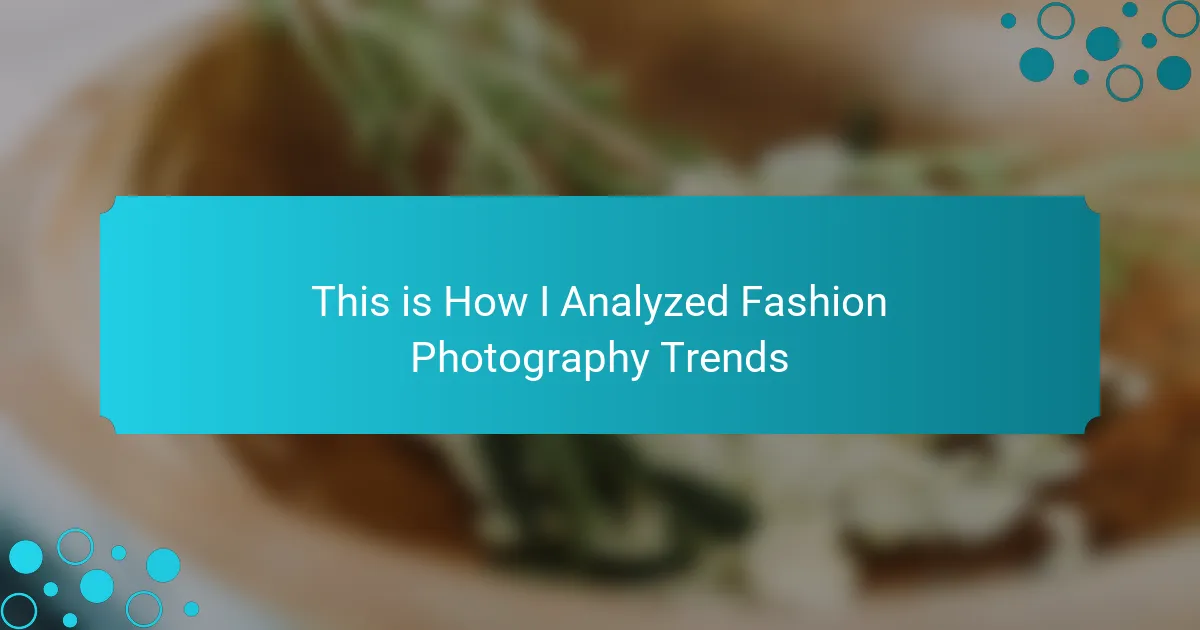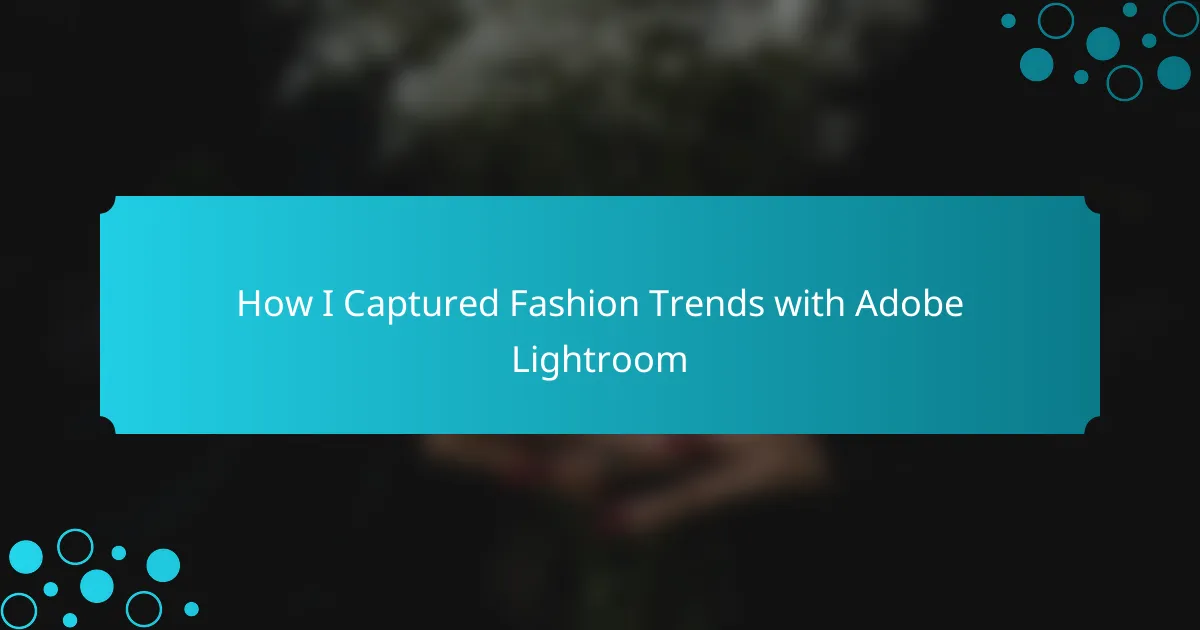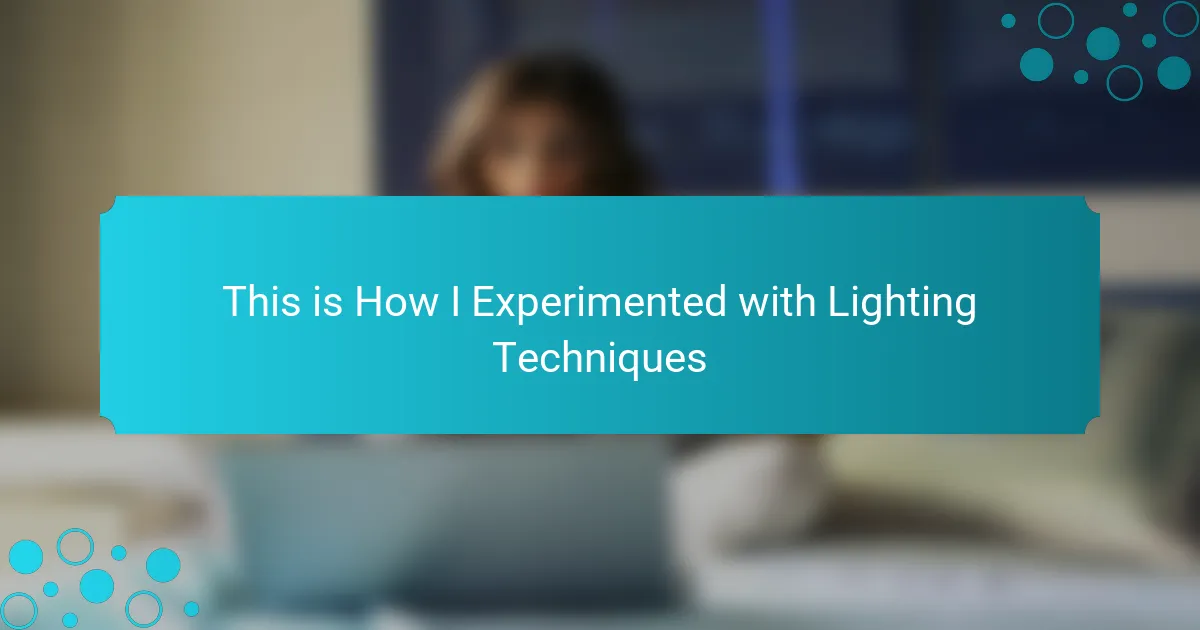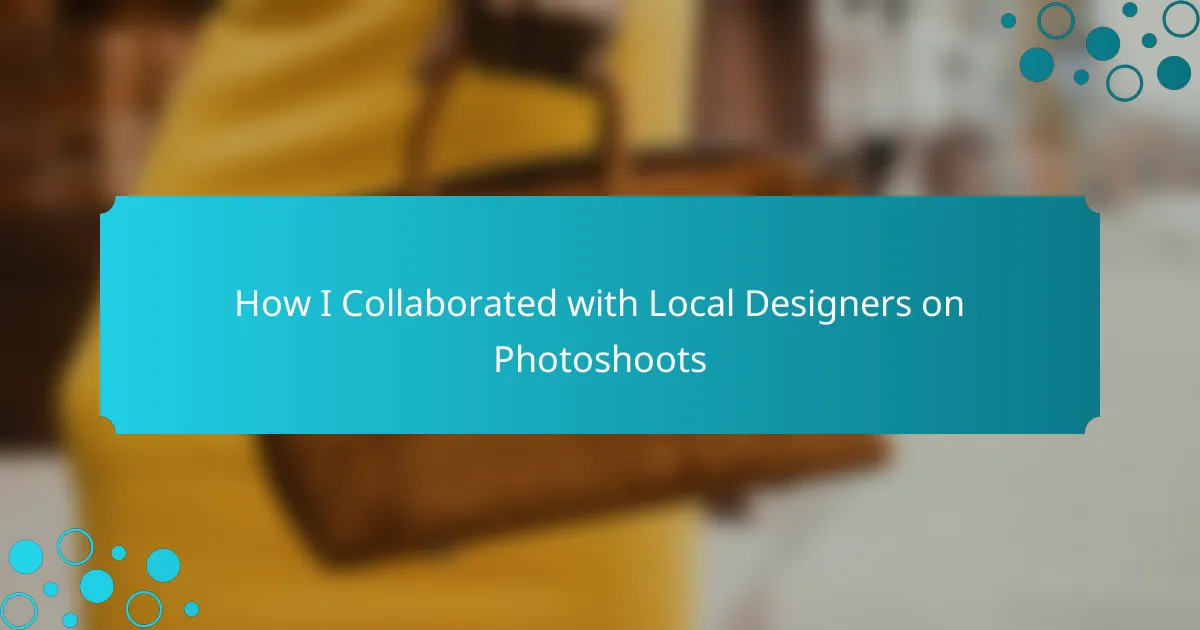Key takeaways
- Color theory influences fashion choices by impacting emotions and perceptions, with bold colors evoking confidence and softer hues promoting calmness.
- Using complementary and analogous color schemes enhances outfit appeal, transforming basic looks into striking visuals.
- Color choices significantly affect mood and social interactions, as certain colors can uplift spirits and foster positive atmospheres in various settings.
- Experimenting with color blocking and different color combinations can add depth to outfits and serve as effective conversation starters.
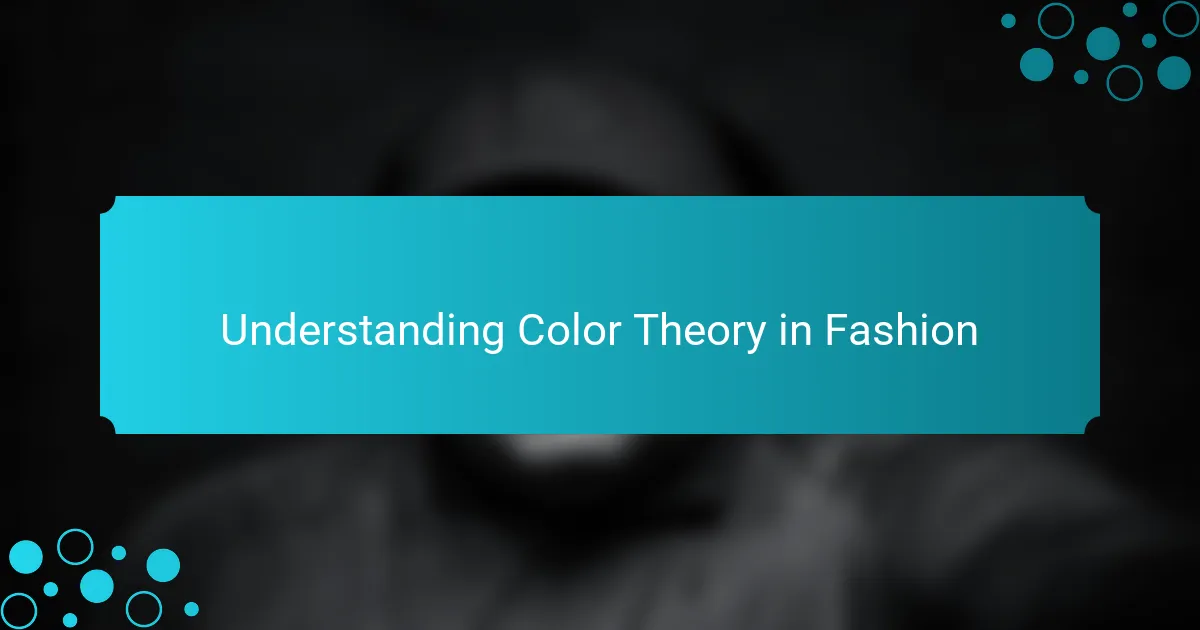
Understanding Color Theory in Fashion
Color theory in fashion is a captivating subject that explores how colors interact and influence our emotions and perceptions. In my experience, understanding the basics of color theory has helped me make better clothing choices for different occasions. For instance, I’ve noticed that wearing bold colors like red or blue can evoke confidence and draw attention, while softer hues like pastels bring a calming effect.
As I navigate through various fashion choices, I often consider the following elements of color theory:
- Color Wheel: The fundamental tool that shows how colors relate to one another.
- Warm vs. Cool Colors: Warm colors (reds, oranges) elicit energy and excitement, while cool colors (blues, greens) create a sense of tranquility.
- Complementary Colors: Colors opposite each other on the wheel enhance each other when paired, making outfits visually striking.
- Analogous Colors: Choosing colors next to each other for a harmonious look that is easy on the eyes.
- Color Psychology: Different colors can influence mood and how others perceive us—this is something I’ve learned to leverage in my wardrobe choices.
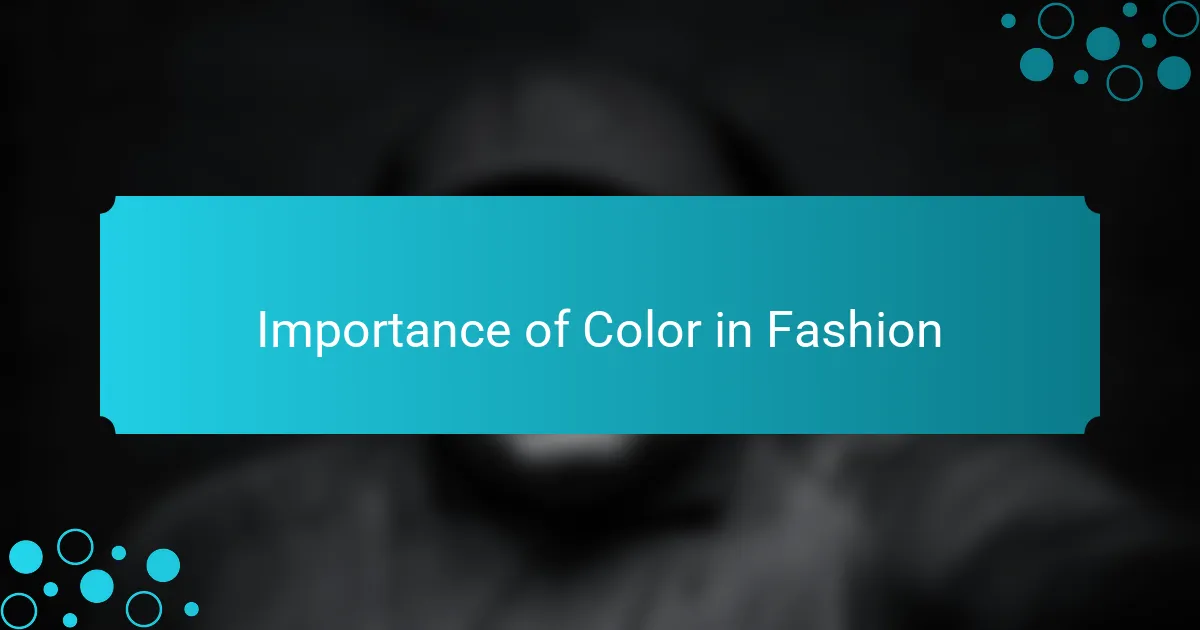
Importance of Color in Fashion
When it comes to fashion, colors play a crucial role in self-expression and identity. I can’t count how many times I’ve worn a vibrant orange dress and felt an instant boost of energy. It’s fascinating how the colors we choose not only reflect our mood but can also influence how others perceive us—a bright outfit can open the door to new interactions, don’t you think?
Moreover, utilizing complementary colors has allowed me to create striking outfits that truly stand out. For example, pairing a deep blue top with a vivid yellow skirt made me feel adventurous and daring. This simple color combination transformed a basic look into something eye-catching, proving that understanding color choices can elevate our fashion game.
Then there’s the emotional aspect of colors—something I realized during a family gathering where I wore soft lavender. The calming hue not only made me feel relaxed but also drew compliments from relatives, enhancing the warm atmosphere. It’s incredible to see how the right colors not only elevate our style but also contribute to the vibes we create around us.
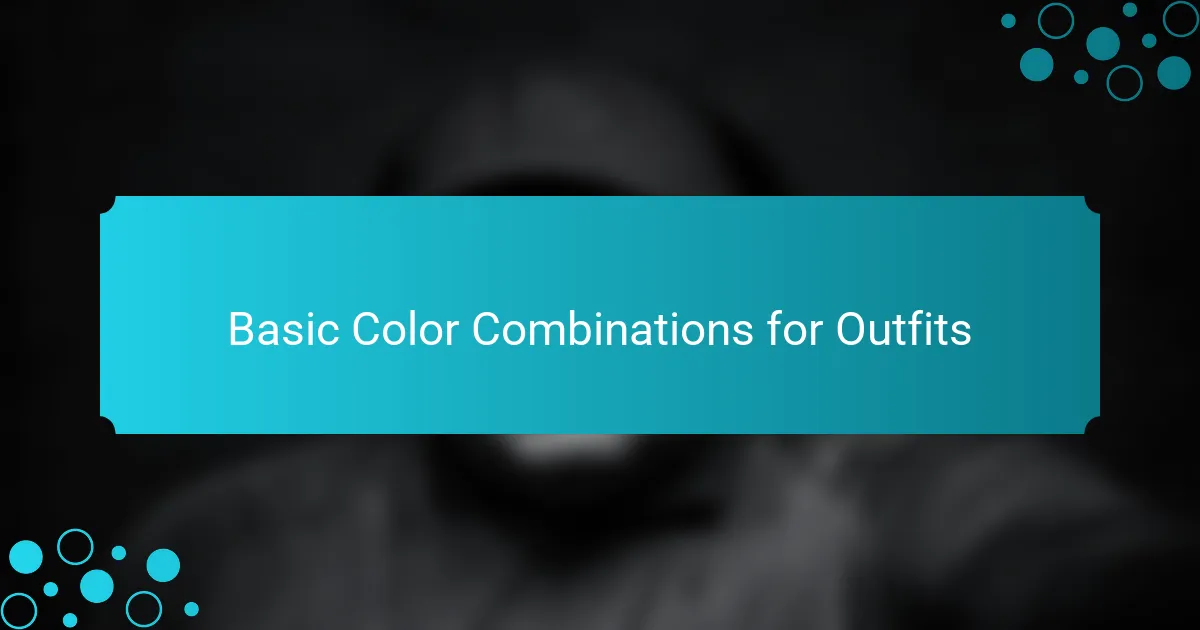
Basic Color Combinations for Outfits
Understanding basic color combinations can transform your outfit choices and elevate your personal style. I recall the first time I experimented with complementary colors—finding that perfect balance between vibrant shades opened up a whole new world of creativity for me. For example, pairing a deep navy with a rich mustard not only made me feel confident but also received compliments that boosted my mood.
Additionally, I often rely on analogous colors to create a soft, harmonious look. When I wear varying shades of blue and green, I feel a sense of tranquility and freshness, which somehow brightens my day. It’s empowering to see how something as simple as color plays such a significant role in how we feel and present ourselves to the world.
| Color Combination | Effect |
|---|---|
| Complementary | Creates contrast and vibrance |
| Analogous | Offers harmony and serenity |
| Triadic | Brings balance and fun |
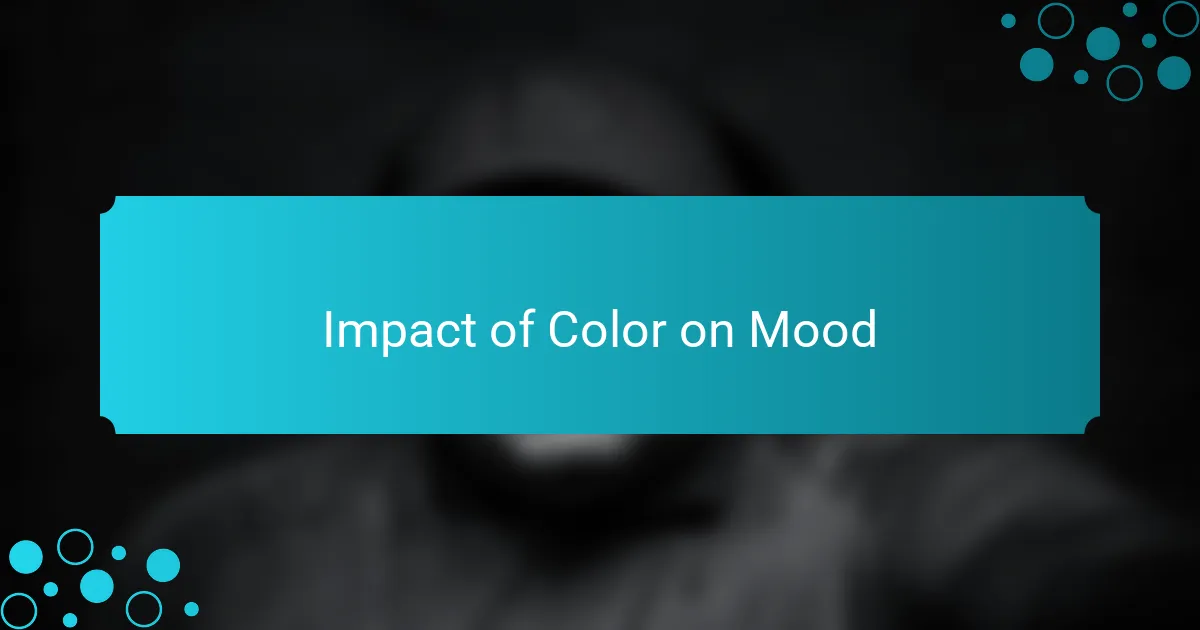
Impact of Color on Mood
Color undeniably influences our emotions. I remember wearing a deep red dress for a presentation; my confidence soared the moment I slipped it on. It’s amazing how a single color can uplift our spirits or even calm our nerves. Do you ever notice how certain colors can shift your mood throughout the day?
Soft colors, like pale pink or mint green, create a comforting aura. I once donned a light peach top to a brunch with friends, and the warm, inviting hue seemed to enhance our laughter and conversations. It made me realize how subtle shifts in color can foster a positive atmosphere, affecting not just how we feel but also how we connect with others.
On the other hand, dark and muted tones can evoke somber feelings. I recall wearing a black outfit to a solemn event. The color suited the occasion but also reminded me of the weight of the moment. It’s interesting how we can use color, either intentionally or subconsciously, to match or shift our emotional states. What does your wardrobe say about your feelings?
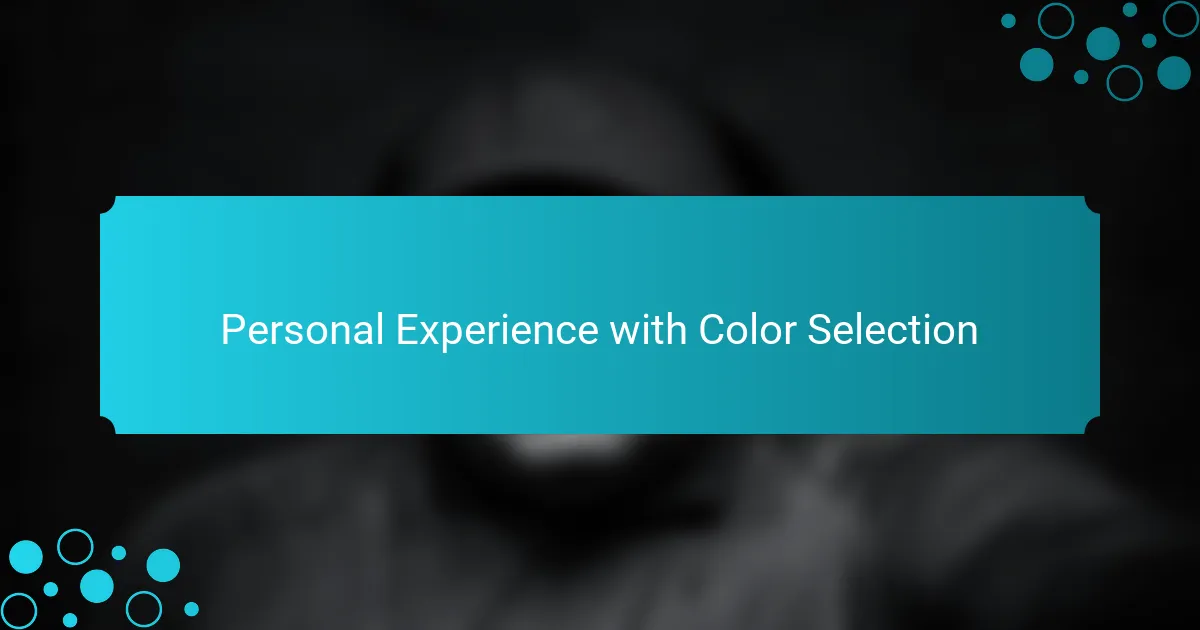
Personal Experience with Color Selection
When I first started exploring fashion, color selection felt a bit overwhelming. I remember a time when I opted for a vibrant red dress for an event, thinking it would convey confidence. Surprisingly, I received numerous compliments, which reinforced my belief in the power of choosing the right color—it played a significant role in how I felt and how others perceived me.
Color theory tells us that different colors evoke different emotions. For instance, wearing a soft blue can create a calming effect, while bright yellows might energize and uplift. I’ve found that knowing this can transform not just the clothes I wear, but the way I carry myself. It’s fascinating how a simple color choice can impact my mood and the atmosphere around me.
Here’s a comparison table to illustrate some of the emotions associated with different colors:
| Color | Emotional Impact |
|---|---|
| Red | Passion, Energy, Excitement |
| Blue | Calm, Trust, Serenity |
| Yellow | Happiness, Optimism, Warmth |
| Green | Balance, Growth, Harmony |
| Purple | Loyalty, Royalty, Creativity |
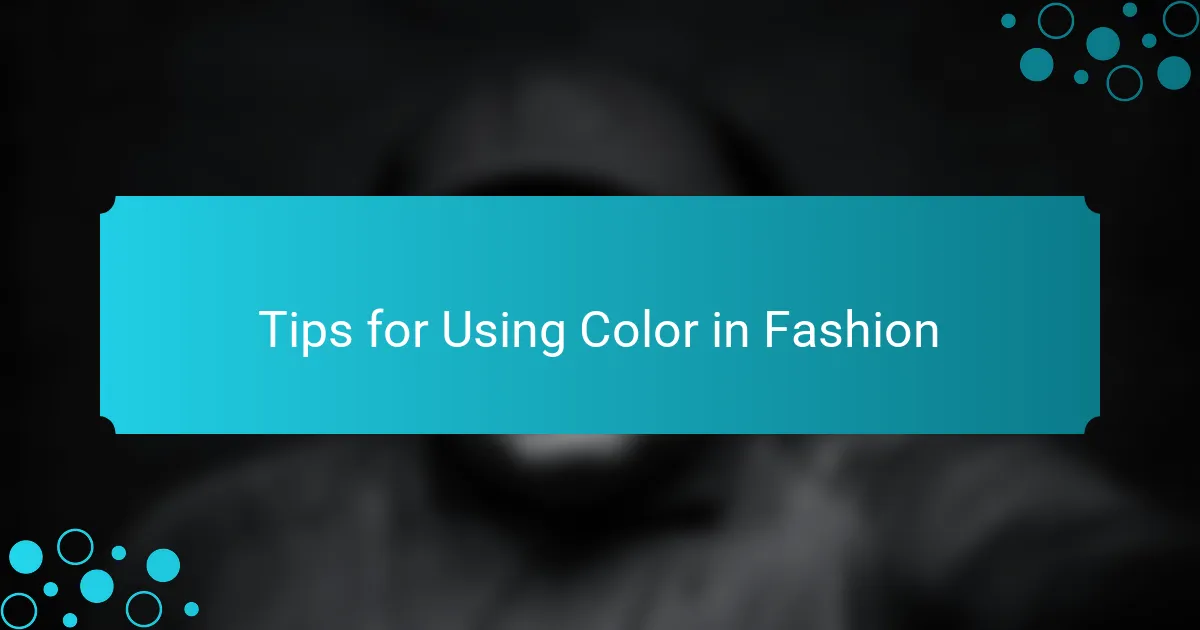
Tips for Using Color in Fashion
When it comes to using color in fashion, one of my key tips is to understand the emotional impact different hues can have. For instance, wearing vibrant colors like red or yellow can elevate your mood and energize your presence. I remember a time I wore a bold blue dress to a gathering, and it not only made me feel confident, but I also noticed how people responded positively to my outfit.
Another practical suggestion is to explore complementary and analogous color schemes. Pairing colors that are opposite each other on the color wheel, like orange and blue, can create a striking look. In my experience, wearing similar shades, like varying tones of green, offers a subtle elegance that’s perfect for day-to-night transitions.
Lastly, don’t be afraid to experiment with color blocking! I’ve found that contrasting colors in a single outfit can add depth and interest. It often sparks conversation, making my outfit a great icebreaker at events.
| Color Scheme | Description |
|---|---|
| Complementary | Colors opposite each other enhance one another’s vibrancy. |
| Analogous | Colors next to each other create harmony and subtlety. |
| Monochromatic | Variations of a single color provide a sleek and polished look. |
| Color Blocking | Boldly combining contrasting colors for a striking and dynamic visual impact. |
